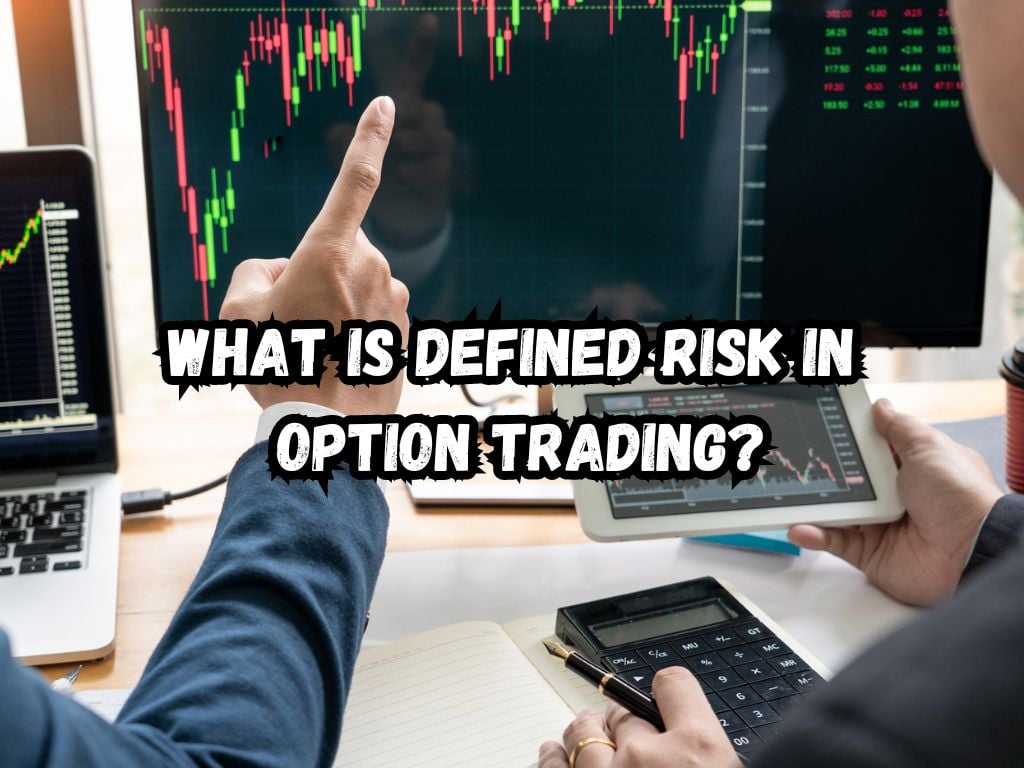In the world of finance, options trading emerges as a complex yet rewarding strategy. It’s a field where the wise management of risk isn’t just a practice but a necessity.
This guide delves deep into the essence of defined risk in options trading, unveiling strategies that help traders shield their investments.
What Is Defined Risk in Option Trading?
Defined risk in options trading refers to strategies where the maximum potential loss is known at the outset of the trade.
Unlike undefined or unlimited risk strategies, where losses can theoretically be infinite, defined risk offers a safety net. It allows traders to enter trades with a clear understanding of the worst-case scenario.

Benefits of Defined Risk Strategies
The core advantage of defined risk strategies lies in their predictability. Knowing the maximum loss upfront brings a sense of security, crucial in markets known for volatility.
For traders, this means sleepless nights over fluctuating markets become less frequent. What’s more, these strategies can align with goals ranging from conservative to somewhat aggressive, making them versatile tools in investment arsenals.
Key Defined Risk Strategies in Options Trading
Several strategies stand out when exploring defined risk options:
Vertical Spreads
Vertical spreads involve buying and selling options of the same type (calls or puts) on the same underlying asset, but with different strike prices or expiration dates.
They offer a straightforward approach to defined risk, capping both potential loss and gain.
Iron Condors
An iron condor is more complex, combining a bear call spread with a bull put spread on the same asset.
This strategy thrives in sideways markets, where the underlying price doesn’t hit the extremes. It defines risk tightly, often appealing to those seeking to profit from low volatility.
Butterflies
Butterfly spreads use either all calls or all puts with three different strike prices.
These strategies aim at profits when the underlying asset’s price hovers near the middle strike price. Like the others, they limit risk but require precision in setup and execution.
How Do We Calculate Risk and Reward Regarding a Defined Risk Strategy?
Calculating risk and reward in these strategies involves some math but isn’t overly complex. Typically, the risk is the difference between the strike prices minus the premium received (for sellers) or the premium paid (for buyers).
The reward calculation depends on the strategy’s specifics but often mirrors the risk in structure, allowing for clear expectations before entering a trade.
Adjusting and Managing Defined Risk Trades
Even the best-laid trades may need adjustments, especially as market conditions shift. The prime strategy for adjustments is often to close or roll out positions.
“Closing” means taking the opposite action of your initial trade to exit the position, while “rolling out” involves moving your trade to a different expiry date.
Both methods aim to minimize loss or lock in profits under changing scenarios.

Pro Tips for Leveraging Defined Risk Strategies
Selecting the right defined risk strategy requires a bit of finesse. It starts with a solid understanding of your risk tolerance and market view.
It’s also vital to perform thorough market analysis before launching into trades. Sound decisions stem from clear, data-backed insights rather than hunches.
Moreover, adopting a disciplined approach to trading psychology helps. Recognizing when a trade doesn’t fit your strategy and stepping away is as crucial as knowing when to enter the market.
Frequently Asked Questions
Can defined risk strategies guarantee no losses in options trading?
No strategy can guarantee no losses. Defined risk strategies limit potential losses but don’t eliminate the risk of losing.
How do market conditions affect the performance of defined risk strategies?
Market conditions play a significant role. Volatility, in particular, can impact the effectiveness of these strategies. Traders need to adapt to changing conditions.
Are defined risk strategies suitable for beginner traders?
Yes. These strategies can offer a safer entry point into options trading by limiting potential losses.
How frequently should I review and adjust my defined risk positions?
Regular review is key. Market dynamics change, and staying updated can provide opportunities to adjust trades for better outcomes.
Conclusion
Defined risk strategies in options trading stand as a fortress against the unpredictable tides of the market. They provide clarity and control, two elements dearly sought after in the trading world.
As traders venture into this arena, merging these strategies with continuous learning and strict risk assessment paves the way to success. Embracing defined risk doesn’t mean bidding farewell to risks.
Instead, it’s about managing them with finesse, ensuring that each move is measured and each decision, well-informed. After all, in the grand chess game of options trading, being a step ahead makes all the difference.
Entering the realm of options trading equipped with knowledge on defined risk strategies offers a solid foundation. With this guide, traders can navigate their path with more confidence and less guesswork.


 Tags:
Tags:










